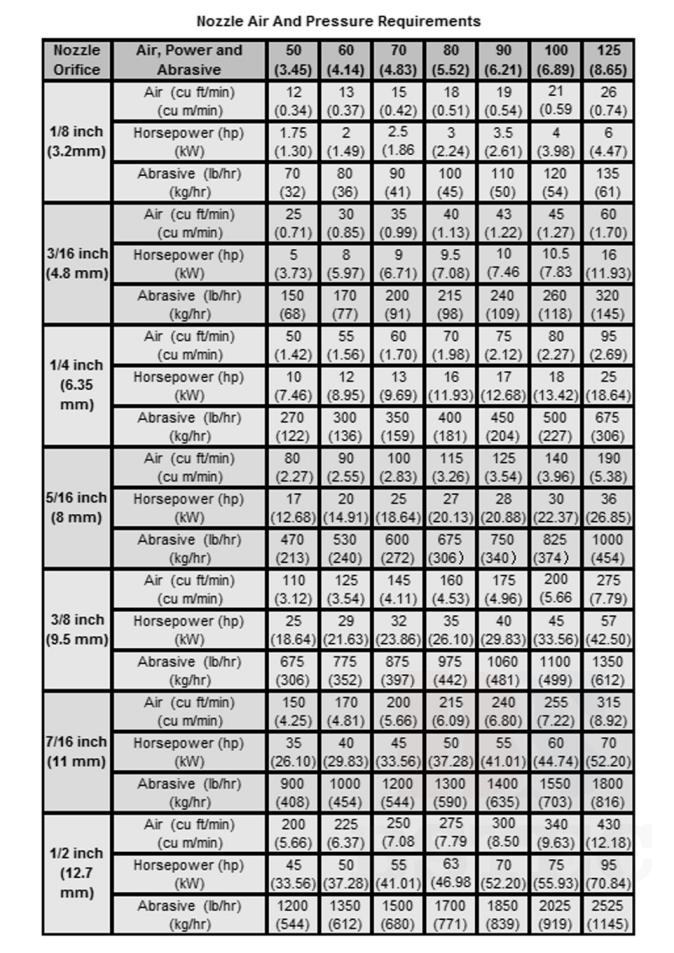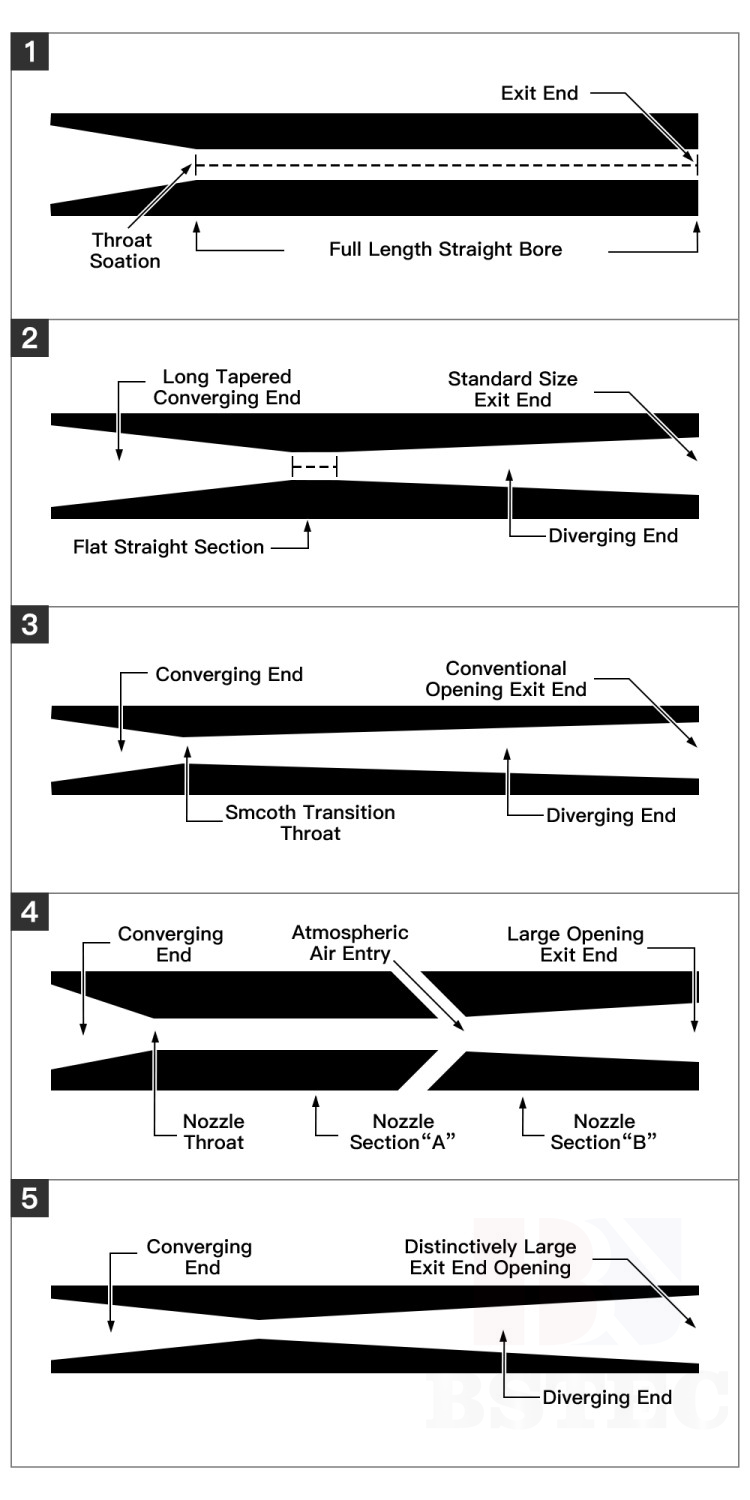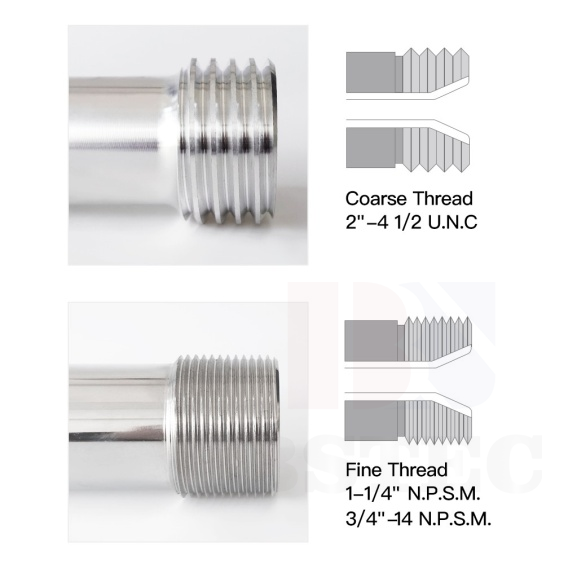Four Steps Teach You How to Select Blast Nozzles
Four Steps Teach You How to Select Blast Nozzles
--Four steps tell you how to select suitable blast nozzles
Sandblasting nozzles are designed in different types with diverse sizes and shapes from various materials. Choosing the right sandblast nozzle for each application is simply a matter of understanding the variables that affect cleaning performance and job costs. If you don't know how to select a suitable nozzle for yourself, follow the 4 steps as below.
1. Choose the Nozzle Bore Size
When selecting a nozzle, it starts with your air compressor. Once you understand how the size of your compressor affects production capabilities, then you'll want to look at nozzle size. Choose a nozzle with too small of a bore and you’ll be leaving some blasting capacity on the table. Too big of a bore and you’ll lack the pressure to blast productively.
The table below shows the correlation between the volume of air, nozzle size, and nozzle pressure and is often used in the industry to select nozzle size. Its real benefit is to select the optimum nozzle size for the nozzle pressure required to carry out the job.

2. Choose the Nozzle Shape
Next is the shape of the nozzle. Nozzles come in two basic shapes: Straight bore and Venturi, with several variations of Venturi nozzles.
Straight Bore nozzles (Number 1) create a tight blast pattern for spot blasting or blast cabinet work. These are best for smaller jobs such as parts cleaning, weld seam shaping, cleaning handrails, steps, grillwork, or carving stone and other materials.
Venturi bore nozzles (Numbers 2 and 3) create a wide blast pattern and increase abrasive velocity by as much as 100% for a given pressure.
Venturi nozzles are the best choice for greater productivity when blasting larger surfaces. Double venturi and wide throat nozzles are enhanced versions of the long venturi style nozzle.
The double venturi style (Number 4) can be thought of as two nozzles in series with a gap and holes in between to allow the insertion of air into the downstream segment of the nozzle. The exit end is also wider than a conventional nozzle. Both modifications are made to increase the size of the blast pattern and minimize the loss of abrasive velocity.
Wide throat nozzles (Number 5) feature a large entry throat and a large diverging exit bore. When matched with the same sized hose they can provide a 15% increase in productivity over nozzles with a smaller throat. It's also a good idea to have angle nozzles available for tight spots like bride lattice, behind flanges, or inside pipes. Many operators waste abrasives and time waiting for ricochet to get the job done. The little time it takes to switch to an angle nozzle is always quickly recovered, and total time on the job is reduced.

3. Choose the Nozzle Material
Once you have determined the nozzle size and shape, you'll want to consider the material the nozzle liner is made of. The three main factors in selecting the ideal nozzle bore material are durability, impact resistance, and price.
Nozzle material selection depends on the abrasive you choose, how often you blast, the size of the job, and the rigors of the job site. Here are general application guidelines for various materials.
Tungsten carbide nozzles: Can offer long life and economy when rough handling can't be avoided. Suitable for blasting slag, glass, and mineral abrasives.
Silicon carbide nozzles: Impact resistant and durable like tungsten carbide, but only about one-third the weight of tungsten carbide nozzles. An excellent choice when operators are on the job for long periods and prefer a lightweight nozzle.
Boron carbide nozzles: Extremely hard and durable, but brittle. Boron carbide is ideal for aggressive abrasives such as aluminum oxide and selected mineral aggregates when rough handling can be avoided. Boron carbide will typically outwear tungsten carbide by five to ten times and silicon carbide by two to three times when aggressive abrasives are used. Price is also the highest among them.
4. Choose the Thread and Jacket
Finally, you need to choose the material of the jacket protecting the bore. You also need to consider which style of thread best suits your sandblasting needs: fine thread or coarse (contractor) thread.
1) Nozzle Jacket
Aluminum Jacket: Aluminum jackets offer a very high level of protection against impact damage in lightweight.
Steel Jacket: Steel jackets offer a very high level of protection against impact damage in heavyweight.
Rubber Jacket: Rubber jacket is Lightweight whilst still providing impact protection.
2) Thread Type
Coarse (Contractor) Thread
Industry-standard thread at 4½ threads per inch (TPI) (114mm), this style greatly reduces the chance of cross-threading and is much easier to install.
Fine Thread (NPSM Thread)
The National Standard Free-Fitting Straight Mechanical Pipe Thread (NPSM) is the Industry standard straight thread used widely in North America.

FINAL THOUGHTS
Big air and big nozzles lead to big production rates, but it's the shape of the nozzle bore that determines the acceleration of the particles and the size of the blast pattern.
In all, there is no best nozzle, the key point is to find the most suitable nozzles for your use.













